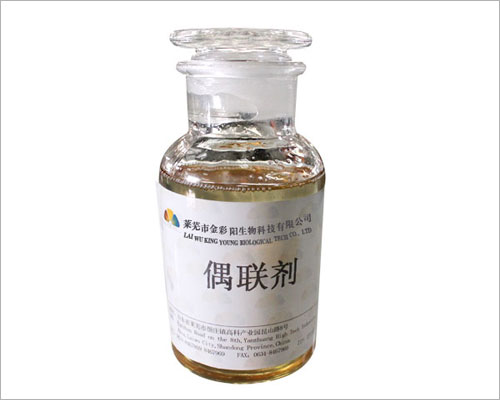Introduction to PVC and Various Additives (1)

Introduction to PVC and Various Additives (1)
The PVC plastic formula is mainly composed of PVC resin and additives, which are divided into heat stabilizers, lubricants, processing modifiers, impact modifiers, fillers, aging resistant agents, colorants, etc. according to their functions. Before designing PVC formulas, one should first understand the properties of PVC resin and various additives.
Raw materials and additives
PVC resin
The resin used to produce PVC plastic profiles is polyvinyl chloride resin (PVC), which is a polymer formed by polymerization of vinyl chloride monomers, with a yield second only to PE.
PVC resin can be divided into two types due to the different dispersants used in polymerization: loose type (XS) and tight type (XI). The loose type has a particle size of 0.1-0.2mm, with an irregular and porous surface in the form of cotton balls, which are easy to absorb plasticizers. The tight type has a particle size of less than 0.1mm, and has a regular surface, solid surface, which is in the form of ping-pong balls, which are not easy to absorb plasticizers. Currently, loose type is commonly used.
PVC can also be divided into ordinary grade (toxic PVC) and sanitary grade (non-toxic PVC). Hygienic grade requires that the content of vinyl chloride (VC) be lower than lOXl0-6, which can be used in food and medicine. With different synthesis processes, PVC can be divided into suspension PVC and lotion PVC. According to the national standard GB/T5761-93 "Inspection Standard for General Purpose PVC Resins by Suspension Method", suspension method PVC is divided into PVC-SGl to PVC-SG8Jk resins. The smaller the number, the higher the degree of polymerization, molecular weight, and strength, but the more difficult the melting flow and processing are. When making soft products, PVC-SGl, PVC-SG2, and PVC-SG3 types are generally used, and a large amount of plasticizer needs to be added. For example, the PVC film uses SG-2 resin with 50-80 parts of plasticizer added. When processing hard products, plasticizers are generally not added or a small amount is added, so PVC-SG4, VC-SG5, PVC-SG6, PVC-SG7, and PVC-SG8 types are used. For example, PVC hard pipes use SG-4 resin, plastic door and window profiles use SG-5 resin, hard transparent sheets use SG-6 resin, and hard foam profiles use SG-7 and SG-8 resins. The lotion PVC paste is mainly used for artificial leather, wallpaper, floor leather and dipped plastic products. Some PVC resin manufacturers classify their PVC resins according to their degree of polymerization (polymerization degree is the number of unit chain links, and polymerization degree multiplied by chain link molecular weight equals polymer molecular weight). For example, the PVC resin produced by Shandong Qilu Petrochemical Factory is SK-700; SK-800; SK-1000; SK-1100; SK-1200, etc. The polymerization degree corresponding to its SG-5 resin is 1000-1100. The physicochemical properties of PVC resin can be seen in Chapter 4.
PVC powder is a white powder with a density between 1.35-1.45g/cm3 and an apparent density between 0.4-0.5g/cm3. Depending on the content of the plasticizer, it can be classified as soft or hard products. Generally, 0-5 parts of the plasticizer content are considered hard products, 5-25 parts are considered semi hard products, and more than 25 parts are considered soft products.
PVC is a non crystalline, polar polymer with high softening and melting temperatures. Pure PVC generally needs to be plasticized at temperatures between 160-210 ° C. Due to the polar bonds between macromolecules, PVC exhibits hard and brittle properties. Moreover, PVC molecules contain chlorine groups, and when the temperature reaches 120-C, pure PVC begins to undergo a dehydrochlorination reaction, which can lead to thermal degradation of PVC. Therefore, various additives must be added during processing to modify and impact PVC, so that it can be processed into useful products.
PVC resin is mainly used for the production of various types of films (such as daily printing film, industrial packaging film, agricultural greenhouse film, and heat shrink film), various types of boards and sheets (whose sheets can be used for plastic suction products), various types of pipes (such as non-toxic water pipes, building threading pipes, transparent hoses, etc.), various types of special profiles (such as doors, windows, decorative panels), hollow blow bottles (used for cosmetics and beverages), cables, various types of injection molded products and artificial leather, floor leather, plastic toys, etc.
stabilizer
Pure PVC resin is extremely sensitive to heat. When the heating temperature reaches 90Y or above, a slight thermal decomposition reaction occurs. When the temperature rises to 120C, the decomposition reaction intensifies. At 150C and 10 minutes, the PVC resin gradually changes from white to yellow red brown black. The decomposition process of PVC resin is a series of chain reactions caused by the HCL removal reaction, which then leads to the breakage of macromolecular chains. The thermal stability mechanism to prevent PVC thermal decomposition is achieved through the following aspects.
By capturing HCl generated during the thermal decomposition of PVC, the catalytic degradation of HCl is prevented. Qihong lead salt stabilizers QY-298 mainly act according to this mechanism, as well as metal soaps, organic tin, phosphite lipids, and epoxides Replace active allyl chloride atoms. Metal soaps, phosphite lipids, and organic tin can act according to this mechanism. React with free radicals and terminate the reaction of free radicals. Qihong organic tin stabilizer YJ-906 and phosphite act according to this mechanism. The addition of conjugated double bonds leads to the growth of conjugated chains. Organic tin and epoxy react according to this mechanism Decompose peroxides to reduce the number of free radicals. Organic tin YJ-906 and phosphite act according to this mechanism. Passivation of metal ions that catalyze the removal of HCl. Organic tin stabilizer YJ-906: suitable for PVC transparent products, with extremely high thermal stability and excellent initial coloring properties, pure color, minimal gas, and no precipitation
| Previous:Introduction to PVC and Various Additives (2) | next:A PVC film manufacturer in Hebei, using our company's pigments to achieve continuous production |







